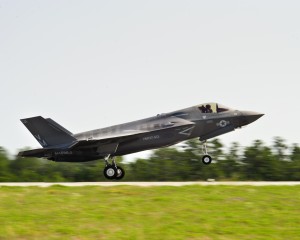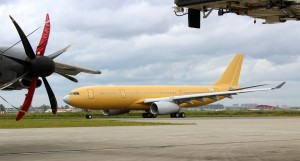5/28/12: by Robbin Laird
During my recent visits in Spain and France as part of the Trade Media event held by Airbus Military, I had a chance to reflect on two key elements shaping the future of military aviation.
The first is that no platform fights alone.
Whether it is the A400M or the F-35, each platform is part of a fleet and is designed to operate as such.
For example:
- Common serial numbers or UIDs are built in. These common markings enable a global logistics management effort.
- Multi-national training is a core focus of the A400M and the F-35, and this common training facilities cross-fertilization of ideas of how to use a common fleet.
And global reach is enabled by each participant in the program getting economies of scale on parts, surge capabilities, and the possibility of cross learning on con-ops.
The second is the lack of enthusiasm Inside the Beltway with regard to anything new which allows us to reshape capabilities, to stay competitive, or to get ahead of the game.
This lack of enthusiasm was brought home by two personal events.

The first was seeing the Concorde sitting in the tarmac next to the A400M. The Concorde was and is exciting.
So where is our next Concorde? Building buses for mass travel is great but does little to generate much imagination and excitement about the future of aviation.
The second were recent questions from my 11-year-old son. Where is my Space Shuttle? When are going to get to Mars? And can I go?
When informed about the sad realities of the current U.S. space effort, he commented: “This is not fair. You guys had great stuff, where is our stuff.”
Good question – difficult answer.
Associated with the lack of enthusiasm is that the analytical community is missing the core point about fleets – it is not about the next platform, it is about the built in evolution of the platform.
And the fleet-enabled 21st century aircraft are deliberately designed this way.
General Robling, the Deputy Commandant of USMC Aviation, was asked by a journalist at the Paris Air Show in 2011: “What is the next great airplane after the F-35 and the Osprey?” Robling’s answer was something like this: “Every few years the F-35B will be more capable and a different aircraft. The F-35B flying in 2030 will be significantly more capable than the initial F-35Bs. The problem is that will look the same at the airshows; but will be completely different inside. So you guys are going to have a tough time to describe the differences. It is no longer about adding new core platforms; it is about enabling our core multi-mission platforms. It is a very different approach.”
Going back to Washington, reminded me of the vast number of experts resident Inside the Beltway on TESTING.
It would be refreshing if these folks had listened to the presentation of the A400M test director.
“Testing is about finding problems and fixing them. When you put a complex system together, we discover items to fix as we go to delivery to the French Air Force this year. We want to find the problems, not avoid them.”
And one of the more amusing exchanges from my point of view was the A400M folks explaining their test approach and how they incorporate solutions in the march to the delivery to their first customer.

In the return flight from its Asian tour, the A400M developed an engine issue, which requires the manufacturer of the part to sort out exactly what is going on.
The head of the A400M program explained what he knew, and the need to wait for the manufacturer of the part to determine EXACTLY what needs to be done.
Question: “Does this mean that you need to go backwards and redo the testing done to date?”
I felt I was back in Washington. The answer was of course NO.
“We do concurrent testing and development and we will determine how that part affected which PARTICULAR tests, and perhaps re-do those.”
Oh if only this chap could have explained this to Congress.
But then again, getting on with the introduction, use, and operation of new aircraft is simply too exciting to spend all your time explaining to folks Inside the Beltway that there is a big world out there.
And watching the almost daily launch of a new Airbus plane from Toulouse at 1300 to global customers is a good reminder that there is a world outside of the Beltway.
A final thought about the anomalies of life inside the Beltway.
My exchange with my son – who is a technology enthusiast and Kung Fu fanatic – reminded me of when I was about his age.
When I was younger, the Right Stuff was the point.
America was challenged by the big world, the Russians or whomever. And growing up in that America, we always assumed we would strive to try to be the best.
On the tarmac on the other side of the A400M was a reminder that this is no longer so.
The UAE’s third A330 MRTT tanker was parked there. There is little doubt that a large refuelable tanker with a completely usable deck inside the aircraft is far superior to what the U.S. is buying.
The memory of when I was 11 and the thinking of my current 11 year old would suggest this is not what a global power wants to do.
Getting enthusiastic about the future and the capabilities, which are emerging now, is crucial to any thought of being able exercise global leadership.
A leadership, which is, clearly challenged more by lack of vision than lack of money.
If you don’t, you will be LEFT behind but certainly not LEAD from behind.

